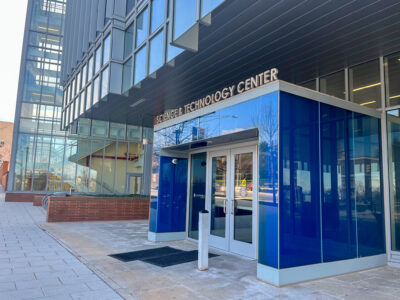While the words and actions of the candidates have deservedly received the most attention in the run-up to next week’s presidential election (go vote!), the workers inside the campaigns at this stage are probably more focused on your data trail.
Drawing on systems used in the worlds of advertising and finance, campaigns have large data operations to help them target and motivate voters, Ben Yuhas said at last week’s Refresh Baltimore talk at Betamore. Yuhas helped President Barack Obama’s 2008 campaign, and now runs data science firm The Yuhas Group.
Political parties and other organizations maintain voter files that detail behavior. It has information on who people voted for, how they answered particular polls, whether they donated and other identifying info. The goal is to build a profile of the voter so campaigns can tailor specific messages, Yuhas said. In Maryland, campaigns can get access to the files for $125, as long as they promise not to use it for commercial solicitation, he said.
While speeches and ads are tools to win hearts and minds, the data operation is targeted at the feet. It’s designed to answer the question, “What gets people out to vote?” Yuhas said.
Timely @RefreshBmore topic: Ben Yuhas talking data and elections at @betamore. Getting voters to the polls is 🔑 pic.twitter.com/E3tEDpt5K3
— Technical.ly Baltimore (@TechnicallyBMR) October 26, 2016
By knowing how voters behave on an individual level, campaigns can determine how to better direct their resources on a street and address level. For one, there is the question of how to spend the time of volunteers making calls and knocking on doors. If a voter is solidly for a candidate and a habitual voter, they may not need as much persuading from the campaign. That leaves time for volunteers to hit additional swing voters on another block.
“If you can skip half the doors you were going to knock on, you can be much more efficient,” Yuhas said.
At the same time, the data can indicate what specific message people will motivate people.
The money race is also important, and data can help campaigns stretch their dollars. The goal is to “align the right message with the right individual so you can move more votes for the same amount of money,” Yuhas said.
Social media provides a way to gather information without a call or knock. Earlier this year, digital marketing agency Jellyfish conducted a social media listening model for the famous swing state of Ohio. The effort analyzed Twitter mentions of Hillary Clinton and Donald Trump by users based in the Buckeye State. Based on data from January through August, Jellyfish predicted a 2.6 percent edge for Clinton.
In an interview that was not associated with the Refresh event, Jellyfish’s Josh Boyd said sampling from Twitter is a way to get a different read on voters than traditional polling, which is still tied to landlines.
“You’re getting a different demographic of people and what I think is a more diverse set of opinions,” he said.
Join the conversation!
Find news, events, jobs and people who share your interests on Technical.ly's open community Slack

Baltimore daily roundup: Real estate deal in the Peninsula; Missing $100M nitrile glove factory; Dirt bike clampdown

Baltimore daily roundup: Gen AI's software dev skills; UpSurge Tech Ecosystem Report; MD service year program

Baltimore daily roundup: Mayoral candidates talk tech and biz; a guide to greentech vocabulary; a Dutch delegation's visit


